Submitted by WA Contents
Washington Square Park Association declares opposition to Ai Weiwei’s public exhibition plans
United States Architecture News - Aug 29, 2017 - 13:22 11360 views
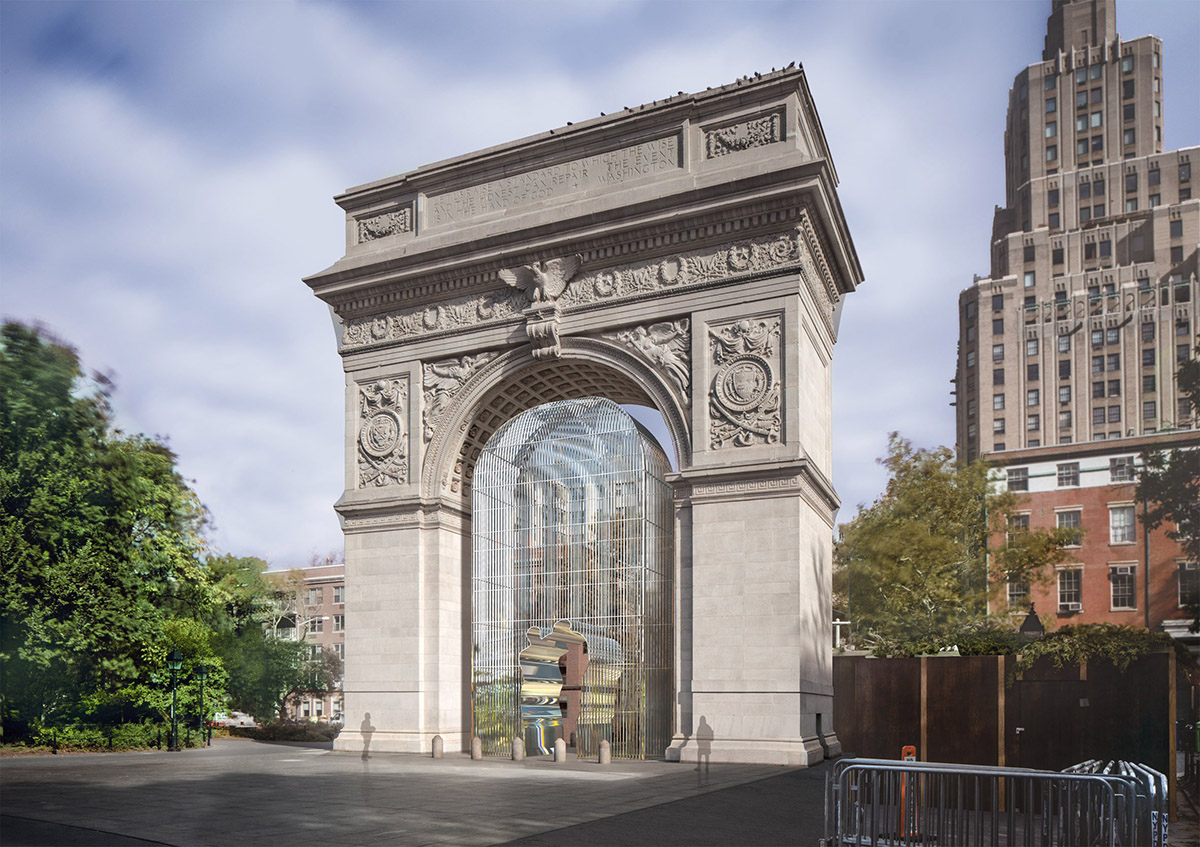
World-renowned Chinese artist - the famous provocateur Ai Weiwei has collaborated with the Public Art Fund to install more than 300 massive public artworks exploring the themes of migration crisis and tense sociopolitical battles in the United States and worldwide.
Set to be installed on October 12, 2017 and erected in many sites across New York City till February 11, 2018, the Public Art Fund and Ai Weiwei have launched a Kickstarter campaign to realize the project aiming to reach $80,000 in total.
Named as Good Fences Make Good Neighbors, if realised, the project will celebrate the Public Art Fund's 40th anniversary in this October 12, and will be one of the largest massive public works ever.
Ai Weiwei, well-known with his politic identity and public works, conceives this ambitious as a multi-site project as a way of transforming the metal wire security fence into a powerful artistic symbol.
By installing fences in varying, site-specific forms at locations across the city – including sites like the New York City Economic Development Corporation-managed Essex Street Market on the Lower East Side, The Cooper Union for the Advancement of Science and Art on Astor Place, JCDecaux bus shelters in Brooklyn in partnership with the New York City Department of Transportation, Doris C. Freedman Plaza at Central Park and Flushing Meadows-Corona Park in Queens both in partnership with NYC Parks, and numerous others throughout the city.
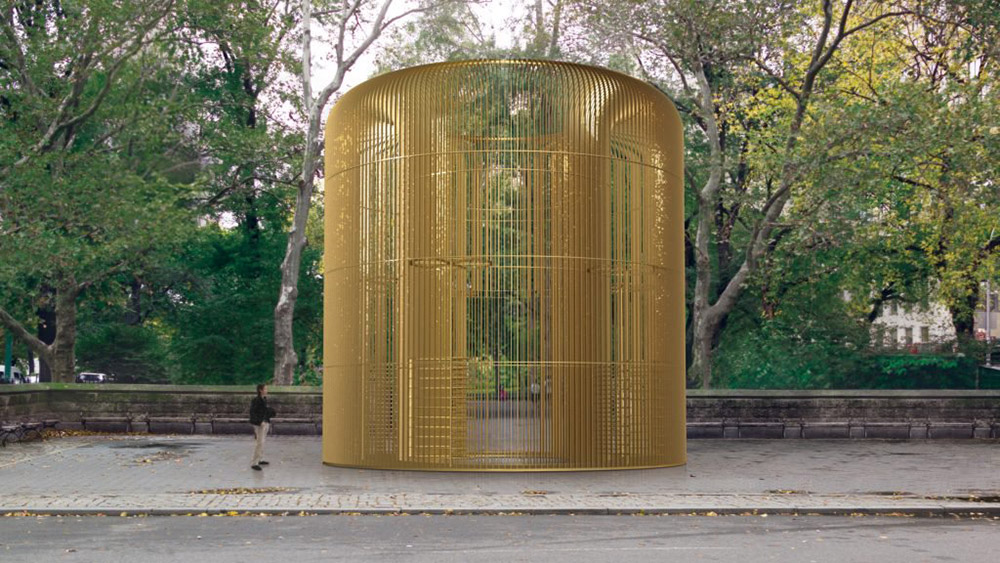
Installation concept rendering, Doris C. Freedman Plaza. Image courtesy of Public Art Fund
"Ai will create striking installations that draw attention to the role of the fence as both a physical manifestation and metaphorical expression of division. In this way, he will explore one of society’s most urgent issues, namely the psychic and physical barriers that divide us, which is at the heart of debates about immigration and refugees today," stated the Public Art Fund.
Ai Weiwei's artworks will appear at street level, rise from rooftops, emerge between buildings, be affixed to lampposts, frame bus shelters, and seemingly grow out of the urban infrastructure.
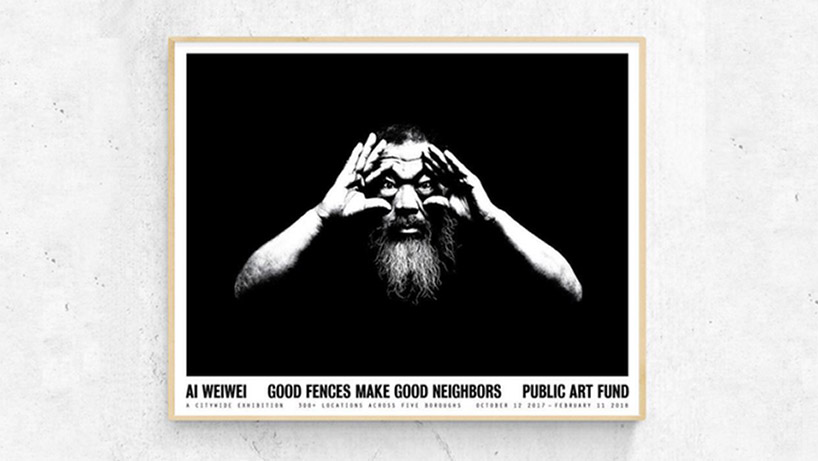
Rally-style print (16" x 20," unframed). Image courtesy of Public Art Fund
Major site-specific sculptures will be installed at iconic locations including Central Park, Washington Square Park, and the Unisphere, while more discrete 2-D and 3-D interventions — including posters with images collected from the artist’s visits to refugee camps around the world — will be installed across New York's five boroughs.
But, following the announcement of the project, the Washington Square Association has declared its opposition to Ai Weiwei's installation, particularly, the installation under the Washington Square Arch in the park. The Board of Directors of the Washington Square Association has made an urgent call to withdraw Weiwei's plans to erect this installation.
Read the full statement of The Board of Directors of the Washington Square Association:
1) The installation will make impossible the erection, under the arch, of our holiday tree that traditionally goes up the weekend after Thanksgiving, and stays until mid-January. It illuminates the darkness with sparkling white lights, and serves as a welcome to people walking or bussing down Fifth Avenue. Over a thousand people in our community gather for the tree lighting and singing early in December and for caroling on Christmas Eve. It is festive and beloved by our neighbors and a shining symbol for all who live or walk along Fifth avenue since 1924.
2) The monumental Arch is a work of art in itself. It does not need to be politicized with the proposed installation. The shape is grand and sculptural, as are the statues of George Washington. We feel that the integrity of its design would be compromised by Mr. Weiwei’s art work. This installation sets a dangerous precedent that one of New York City's most recognized monuments and pieces of art can be decorated and co-opted for 4 months at a time.
3) The project was not built with the collaboration of the neighborhood. We were presented with final designs without input and the community board meeting is being held just days before you break ground. The feedback of the community in such a long-standing and disruptive project should have been more intrinsic to the process, which an organization such as the Public Arts Fund should know given its history.
We would like to also state that we have no objection to Mr. Weiwei’s piece in itself, but only to its placement on the arch that will also block and diminish the annual seasonal celebrations, including the Children’s Halloween Parade and the Sukkot house that take place in that vicinity.
Respectfully yours,
Trevor Sumner, President
The Washington Square Association
The project has collected pledges over $34,000 and the campaign will continue until September 21, 2017. Ai Weiwei's political efforts on immigration crisis, socio-politic issues on human rights and his criticism against Chinese government places him in a different place among other artists. Ai Weiwei was arrested in April 2011 and he received travel ban from his native country China. He couldn't leave China until 2015.
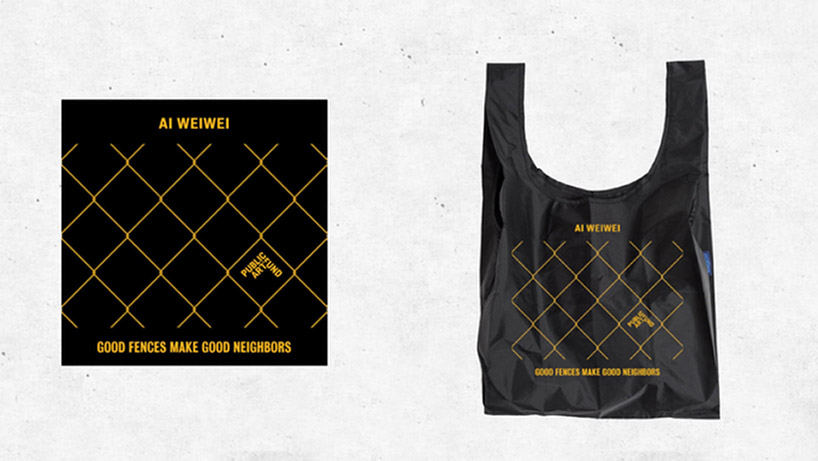
Baggu tote. Image courtesy of Public Art Fund
The high-profile contemporary artist and activist Ai Weiwei visited some of the world’s most vulnerable populations at refugee camps and borders worldwide, and he revealed tragic conditions of these refugee camps on his social media account.
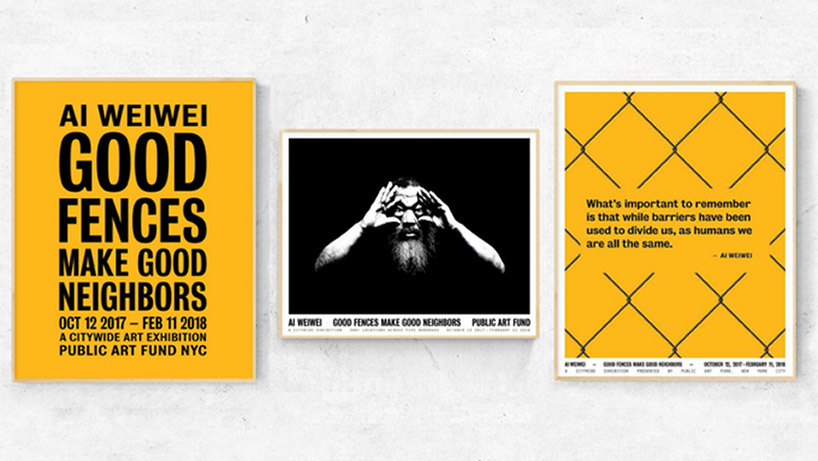
Rally-style prints, set of 3 (16" x 20" each, unframed). Image courtesy of Public Art Fund
"I was an immigrant in New York in the 1980s for ten years and the issue with the migration crisis has been a longtime focus of my practice. And the fence has always been a tool in the vocabulary of political landscaping," explained Ai Weiwei.
"The fence has always been a tool in the vocabulary of political landscaping and evokes associations with words like 'border,' 'security,' and 'neighbour,' which are connected to the current global political environment. But what’s important to remember is that while barriers have been used to divide us, as humans we are all the same. Some are more privileged than others, but with that privilege comes a responsibility to do more."
The Public Art Fund has responded to the Washington Square Park Association’s letter with a statement sent from its president, Susan Freedman:
Public Art Fund has prioritized communication with the community, and listening to community feedback throughout the planning of artist Ai Weiwei’s city-wide public art exhibition, presented by Public Art Fund with NYC’s Parks Department and other relevant city agencies. We have been meeting with community boards, and neighborhood groups throughout the spring and summer, including with Community Board 2, the Washington Square Park Conservancy, and the organization of which Mr Sumner serves as President, The Washington Square Park Association.
Recognizing the importance of community engagement, we reached out to Mr. Sumner on July 18th, had a follow up call on July 26th, and a recent in person meeting with him in Washington Square Park on Aug 14th. On behalf of the community, Trevor Sumner expressed excitement about bringing the project to Washington Square Park and we have been in close dialogue with him to ensure that the tradition of the Christmas tree lighting ceremony moves ahead without interruption. We have long been on the schedule to present to the Community Board on Tuesday, Sept. 6, to hear feedback and respond to questions.
The vital qualities of community and open engagement that Washington Square Park embodies are among the characteristics that make it an ideal location for this important exhibition that brings to light the critical causes of the refugee crisis.
Top image: Installation concept rendering, Washington Square Park, courtesy of Public Art Fund
> via Public Art Fund
